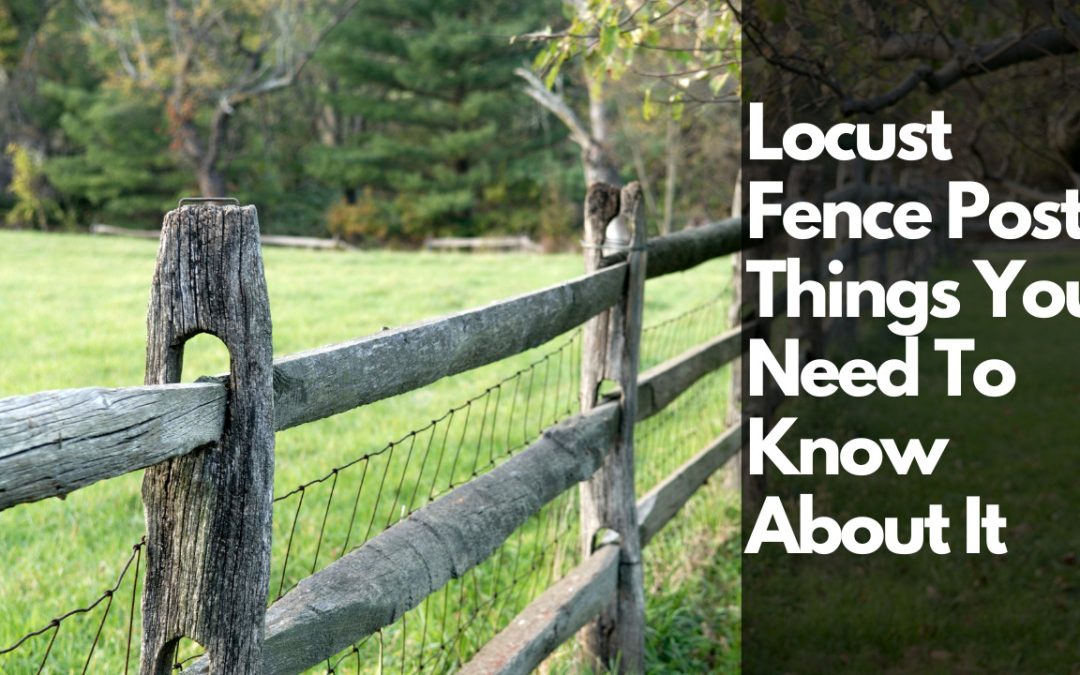Locust fence posts are a popular choice for those looking to install a durable and long-lasting fence. Locust wood is a dense and hard wood that is naturally resistant to decay and pests, making it an ideal choice for outdoor use. In this article, we will discuss the benefits of using locust fence posts and provide some tips on how to install them.
Benefits of Locust Fence Posts
Durability
Locust wood is incredibly durable, with a lifespan of up to 40 years or more. It is naturally resistant to decay and pests, which means that it will require little to no maintenance over its lifespan. This makes it a great investment for homeowners looking for a fence that will stand the test of time.
Strength
Locust wood is known for its strength, making it an excellent choice for fence posts. It has a high weight-to-strength ratio, which means that it can support heavy loads without bending or breaking. This makes it an ideal choice for areas with high winds or heavy snow loads.
Aesthetic Appeal
Locust wood has a beautiful, natural color that can enhance the look of any outdoor space. Over time, the wood will weather to a silver-gray color, which can add to its rustic charm. It is also a great option for those looking to install a fence that blends in with the surrounding landscape.
Environmentally Friendly
Locust wood is a sustainable option for fencing. It is a fast-growing tree that can be harvested without harming the environment. It is also a renewable resource that can be replanted after harvesting.
Installation Tips
Choose the Right Size
The size of your locust fence posts will depend on the height of your fence and the type of soil in your area. As a general rule, your fence posts should be at least one-third the length of your fence panels. For example, if your fence panels are six feet tall, your fence posts should be at least eight feet long. It is also important to consider the type of soil in your area. If you have soft or sandy soil, you may need to use longer fence posts to provide the necessary support.
Dig Deep Holes
When installing fence posts, it is important to dig deep holes to provide a stable foundation. The depth of your holes will depend on the height of your fence and the type of soil in your area. As a general rule, your holes should be at least one-third the length of your fence posts. For example, if your fence posts are eight feet long, your holes should be at least two and a half feet deep.
After you have dug your holes, it is a good idea to add a layer of gravel to the bottom. This will help with drainage and prevent your fence posts from rotting. Fill the hole with about six inches of gravel, and then tamp it down with a tamper.
Set Your Posts in Concrete
Once you have added the gravel, it is time to set your fence posts in concrete. Mix your concrete according to the instructions on the bag and pour it into the hole around your fence post. Use a level to ensure that your fence post is straight, and then let the concrete dry for at least 24 hours.
Attach Your Fence Panels
After your fence posts are set, it is time to attach your fence panels. This will depend on the type of fence you are installing, but in general, you will need to attach the panels to the fence posts using brackets or screws.
Conclusion
Locust fence posts are a great choice for those looking for a durable and long-lasting fence. They are naturally resistant to decay and pests, making them a low-maintenance option for homeowners. When installing locust fence posts, it is important to choose

